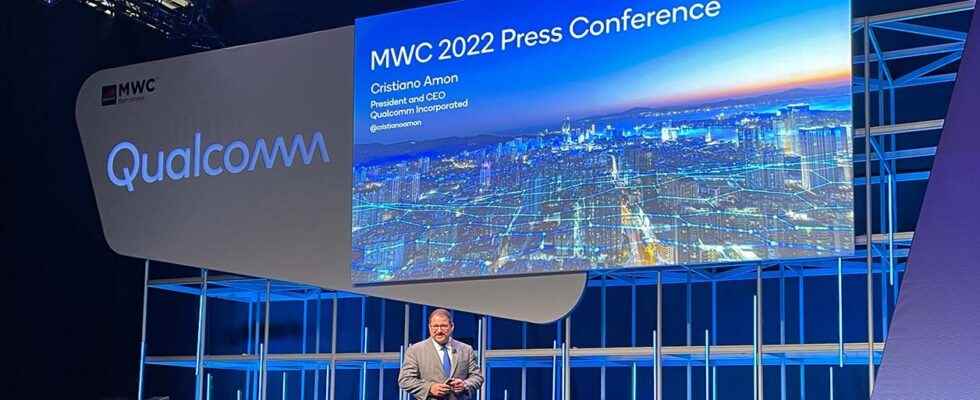Back at Mobile World Congress in Barcelona, Qualcomm hits hard by announcing the first Wi-Fi 7 system, which should offer cumulative speeds of up to 5.8 Gbits/s!
The president of the company, Cristiano Amon, therefore unveiled FastConnect 7800, during a press conference on Monday, February 28. Like previous models in the FastConnect line, this solution will provide both Wi-Fi and Bluetooth (5.3, in this case).
It will be integrated into future Snapdragon, probably in the most efficient SoCs, initially. It will be commercially available from the second half of 2022.
Two bands aggregated
Like Wi-Fi 6E, Wi-Fi 7 will use the three frequency bands reserved for the 802.11 standard: 2.4 GHz, 5 GHz and 6 GHz. But the novelty is the possibility of aggregating four streams on the two 5 and 6 GHz bands. This is what Qualcomm calls HBS (High Band Simultaneous) Multi-Link.
Thanks to this technology, users will be able to benefit from channels with a width of 320 MHz (two channels of 160 MHz aggregated) in the 6 GHz band, or 240 MHz (one channel of 160 and another of 80 MHz) in the 5 GHz band.
Thanks to this, it promises theoretical peaks in speed of 5.8 Gbits/s in the United States, and probably a little less in France where there is less spectrum in the 6 GHz band – enough despite everything to offer a 320 MHz channel.
But bandwidth is not the only gain put forward, according to Qualcomm, latency should be less than 2 milliseconds against 20 ms currently with Wi-Fi 6. This would make Wi-Fi 7 particularly interesting in the context of virtual and augmented reality applications.
Qualcomm obviously puts forward its 4-Stream (2×2 + 2×2) Dual-Band Simultaneous (DBS), extended to high frequency bands 5 or 6 GHz from Wi-Fi 6E. Schematically, this allows a device to connect (in 2×2) to a Wi-Fi 6E or 7 router using the high-performance 5 and 6 GHz band, while at the same time establishing another connection (still 2×2, and always in 5 and 6 GHz) with a mixed reality headset (XR).
The objective is to eliminate latency and slowness, and therefore the need for cables for greedy and demanding uses.
Also see video:
Certification is not complete
The promises are therefore great, and the second half of 2022 is tomorrow. Except Wi-Fi 7 doesn’t really exist yet. Wi-Fi 6 is slowly being installed in France, and Wi-Fi 6E is timidly pointing the tip of its nose.
There is a standardization, with all the technical specifications, which responds to the name 802.11be, but the certification procedure is not complete. If all goes well, it should be finalized in spring 2024at the latest in May.
Equipment manufacturers and manufacturers are used to anticipating things and releasing products incorporating new technologies without delay. An update of firmware chips generally makes it possible to apply the changes retained between the drafts the most advanced of the protocol and its final version. The interest is to be the first to occupy the niche on the market. Not long ago MediaTek carried out the first tests in Wi-Fi 7.
Finally, remember of course that you will need to be equipped with both a terminal and a Wi-Fi 7 compatible router to take advantage of it. On this side, in France, the Wi-Fi 7 boxes are likely to be delayed.
